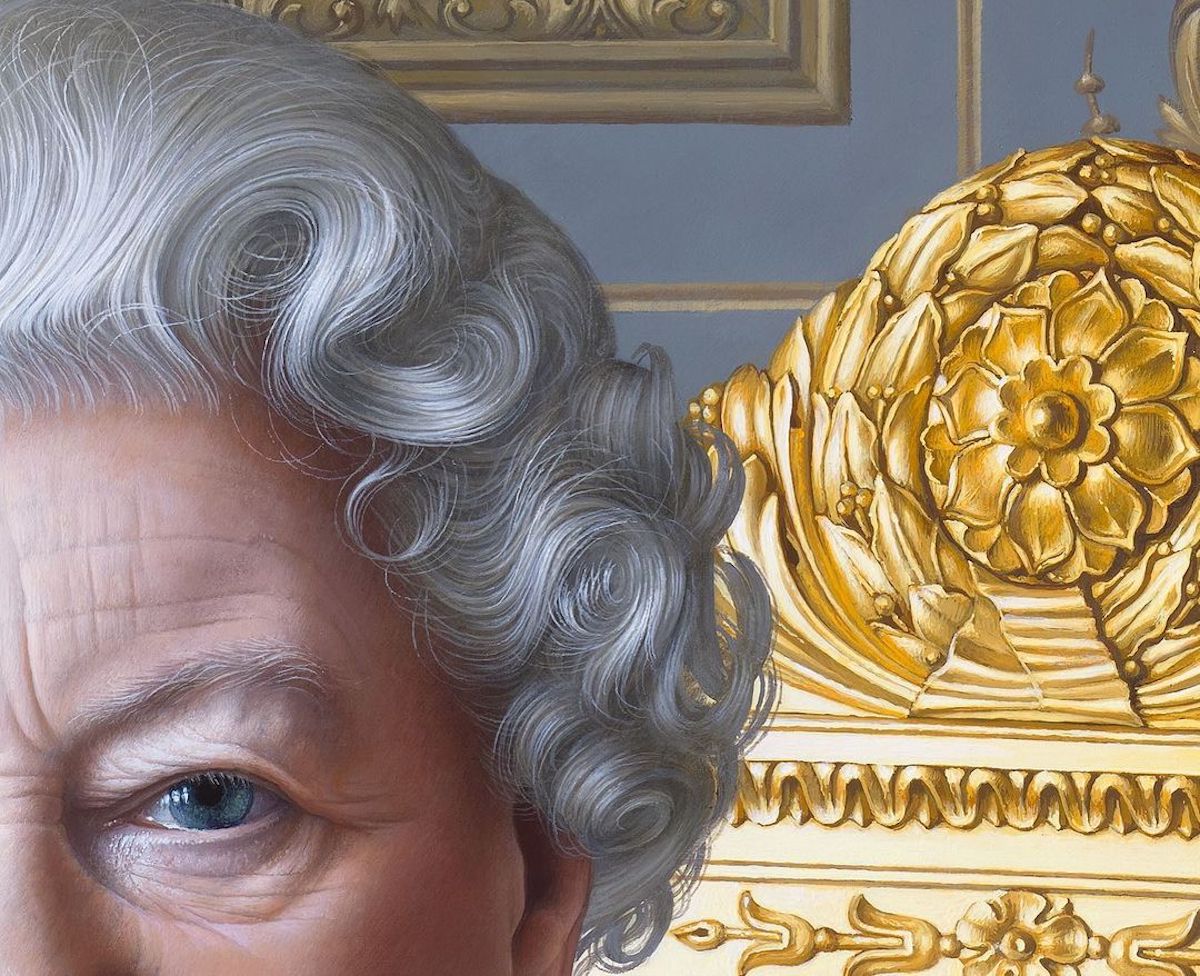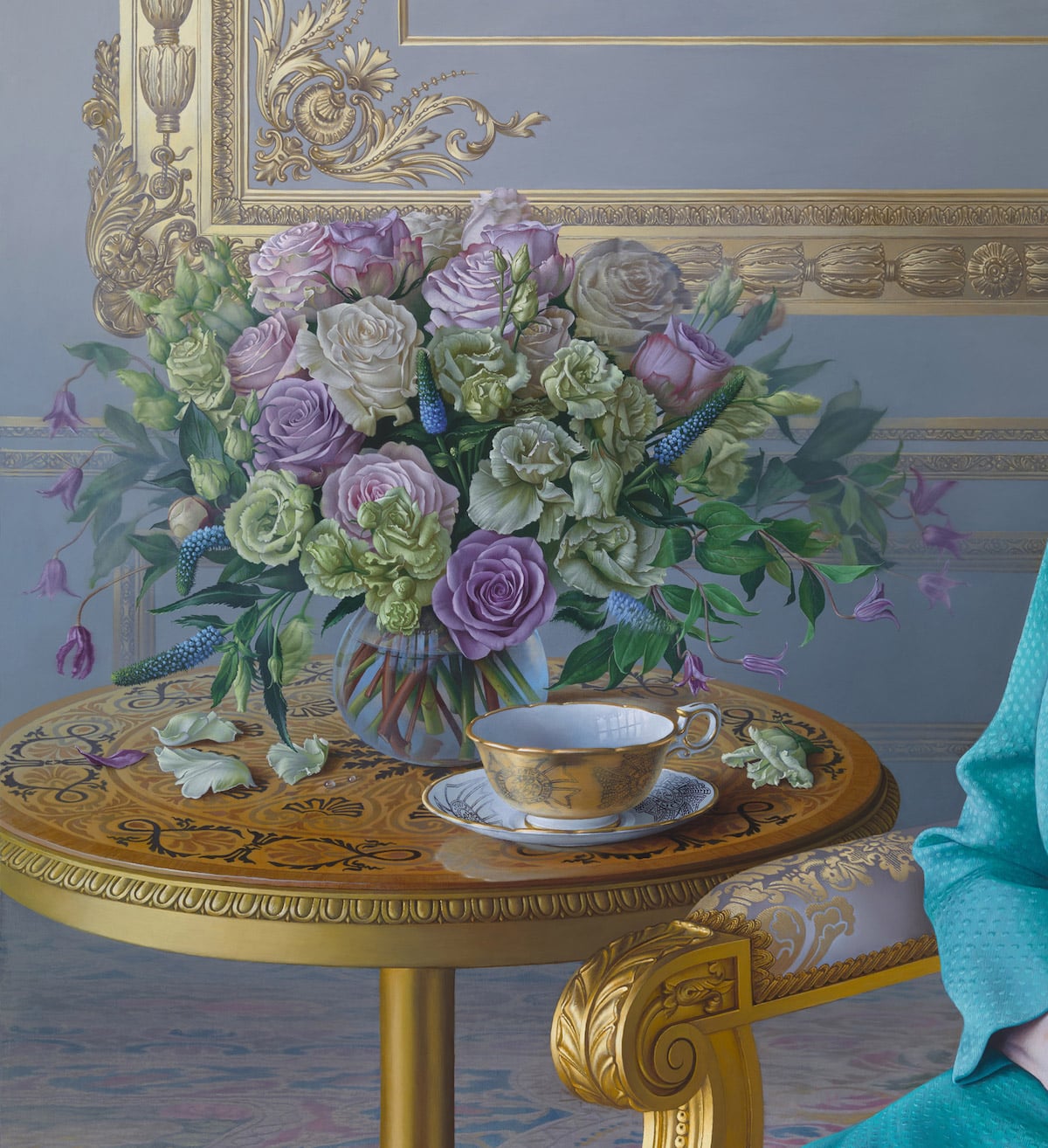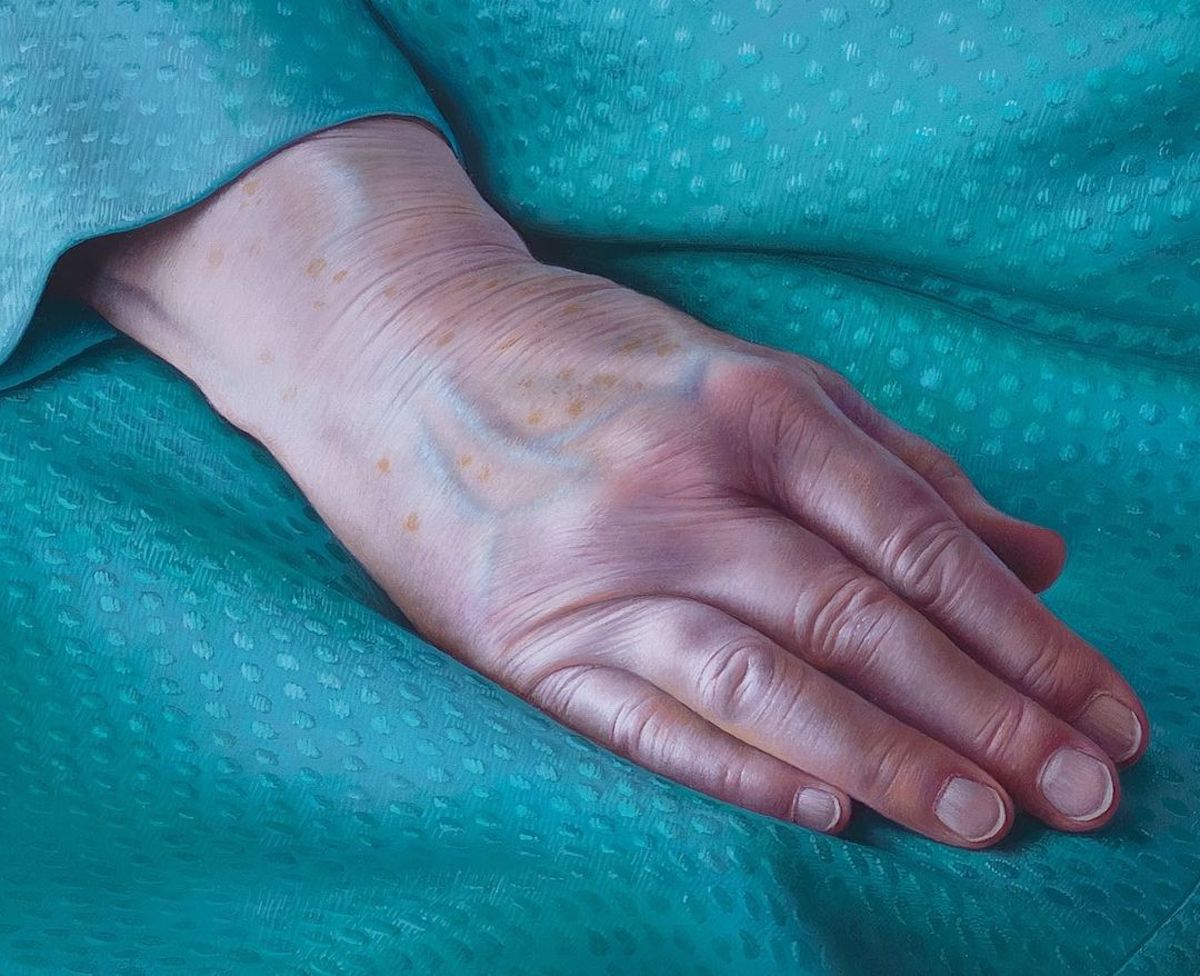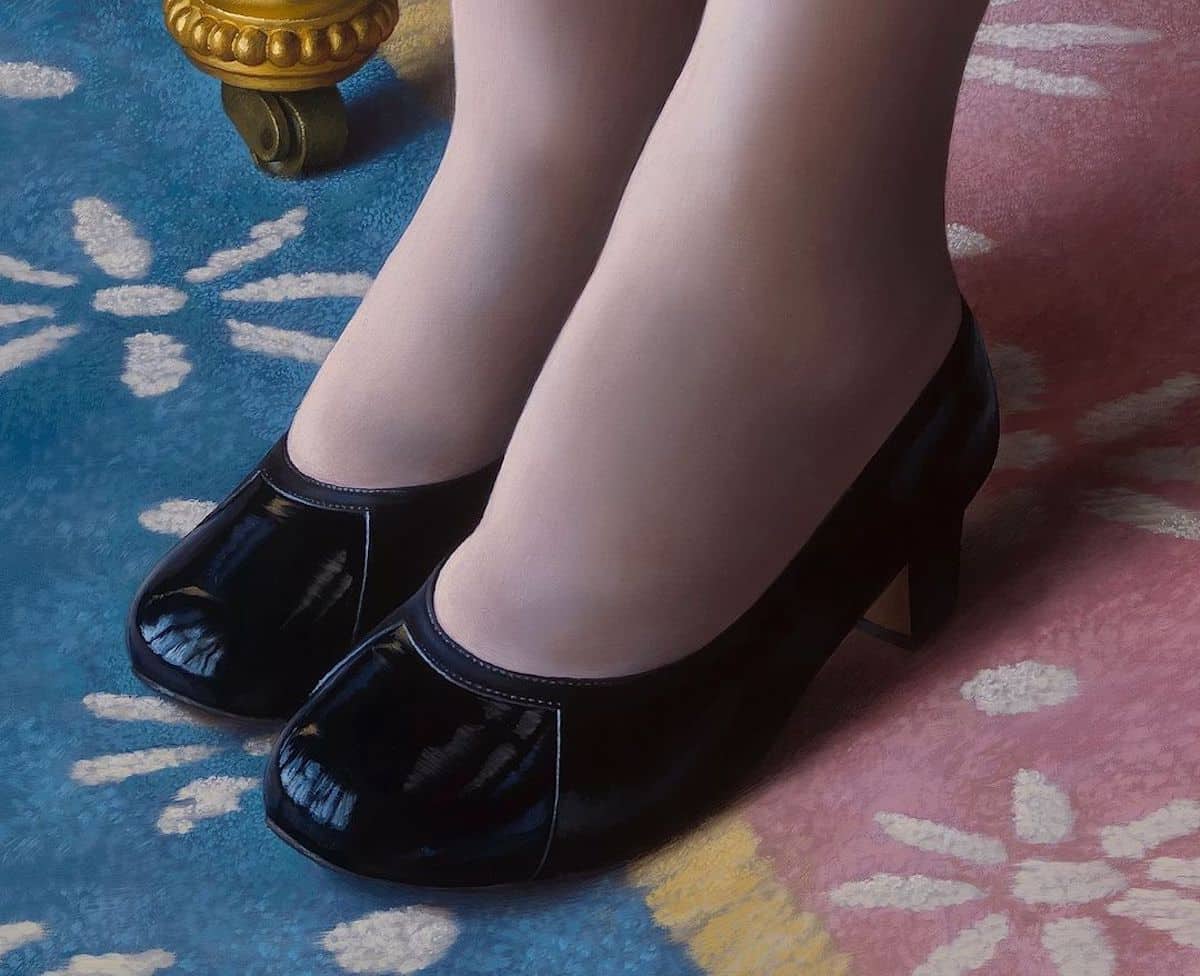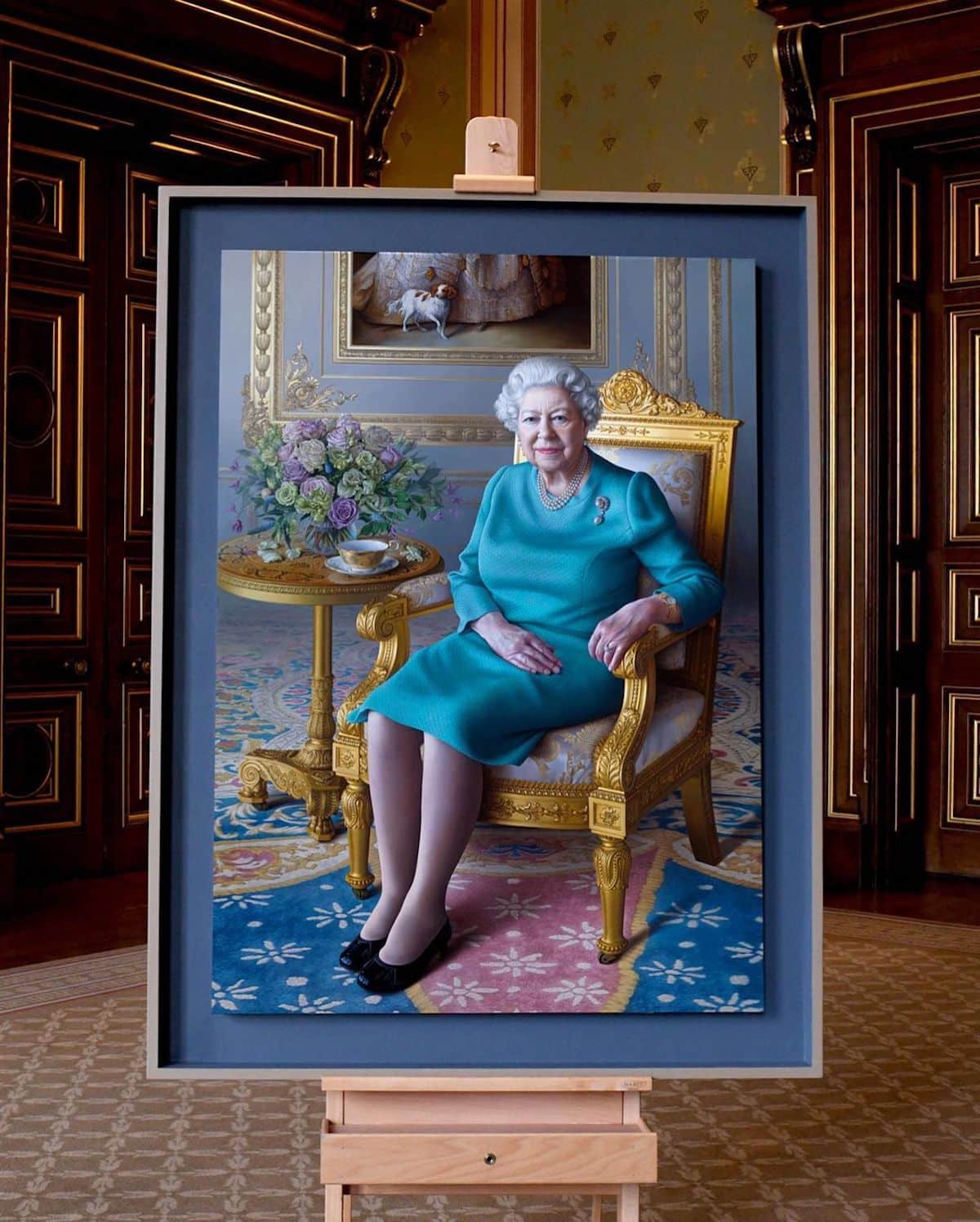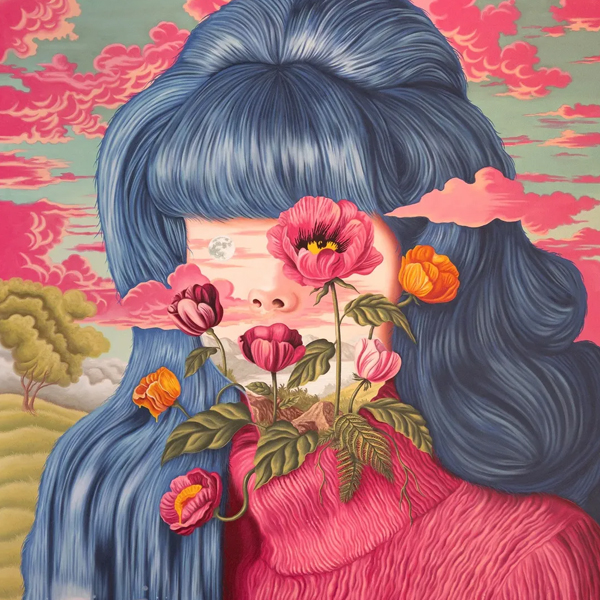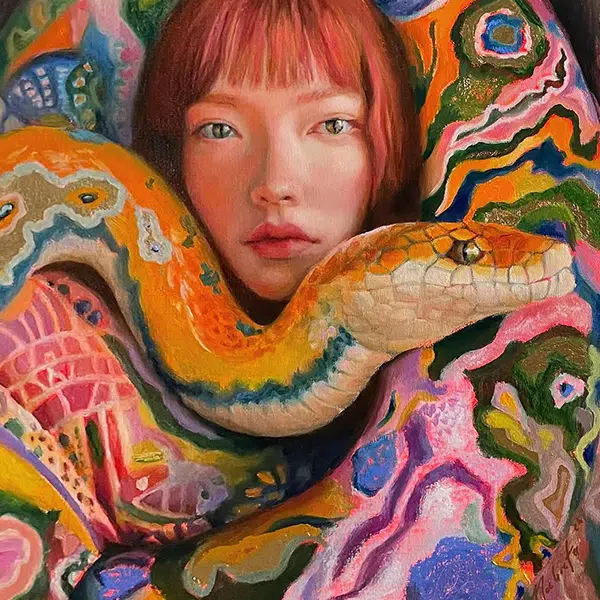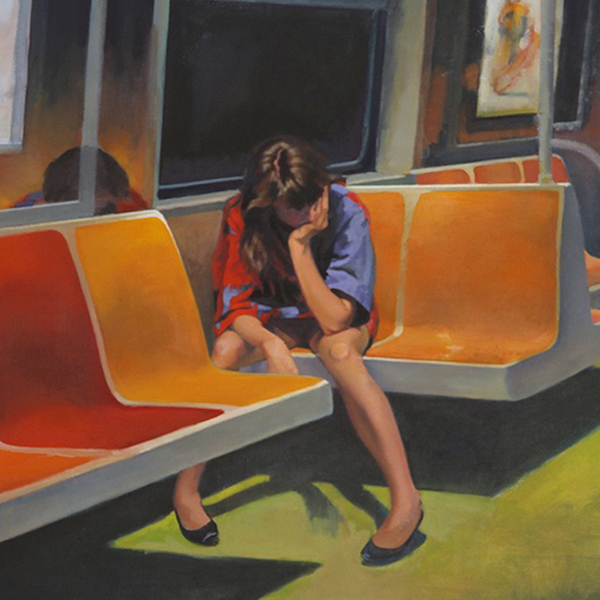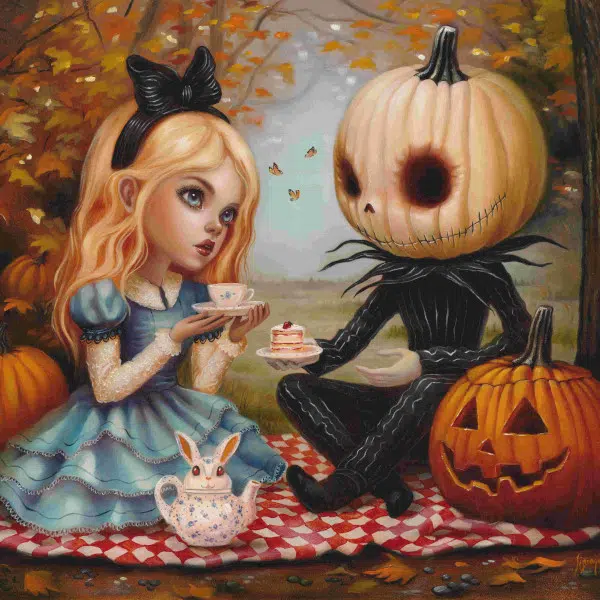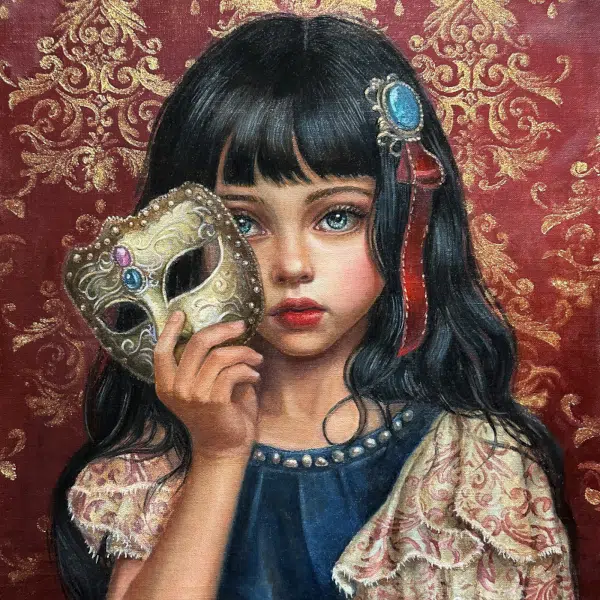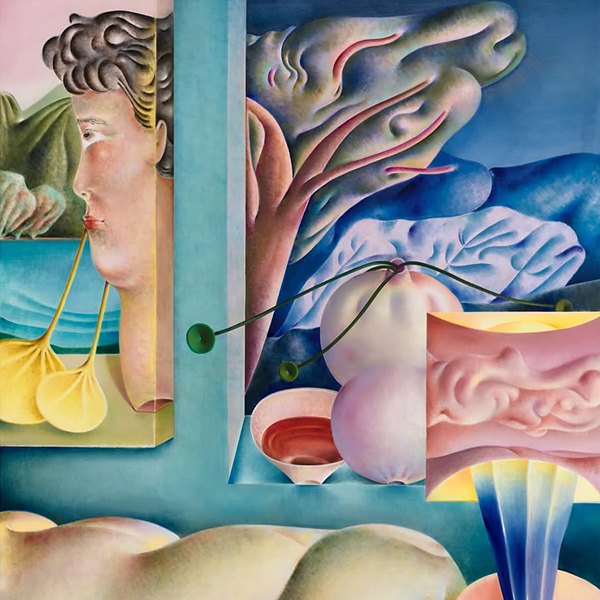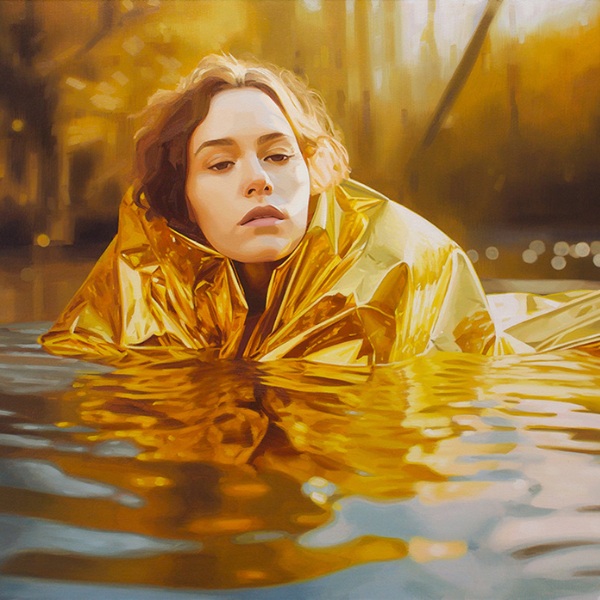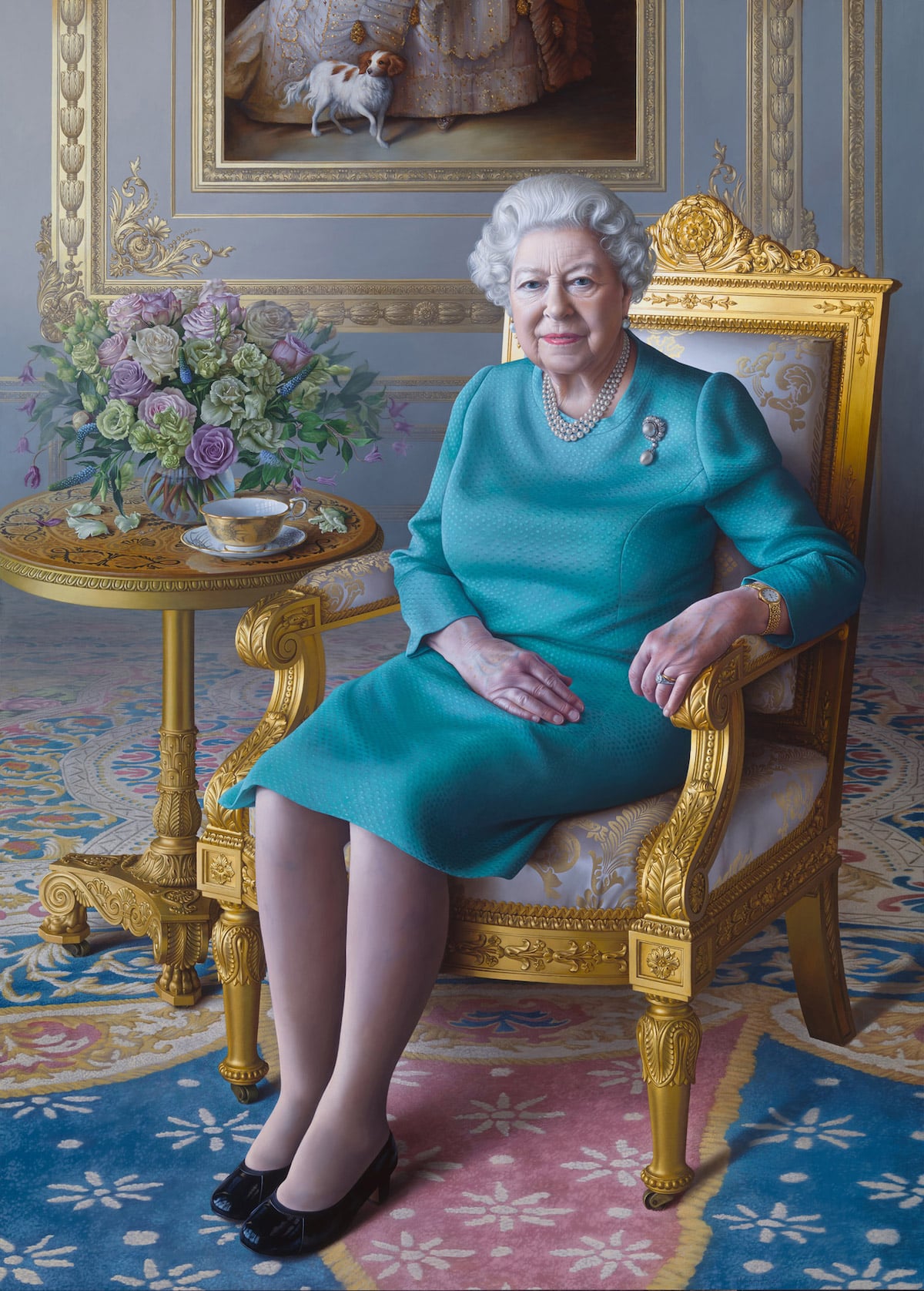
“Her Majesty Queen Elizabeth II,” oil on linen over panel, 140 x 100 cm (about 55.11 x 39.37 in), for The Foreign and Commonwealth Office, 2020.
Even though Queen Elizabeth II has passed, her legacy as a dutiful and graceful monarch lives on. Prior to her death, one painter was tasked with capturing the Queen's likeness in an exquisite portrait. Award-winning artist Miriam Escofet, who was granted the prestigious BP Portrait Award in 2018 for her depiction of her mother, created a hyperrealistic portrait of the Queen over the span of seven months and two in-person sittings.
Measuring approximately 4 by 3 feet in length, this oil painting portrays the sovereign wearing a vibrant blue dress and sitting in a stately room filled with golden details. “It was of course a huge honor to be asked to paint the Queen, but all the more special for me as this came as a result of Sir Simon McDonald having seen my winning portrait of my mother at the BP Portrait Award 2018 at the National Portrait Gallery,” Escofet tells My Modern Met. “During my first meeting with Sir McDonald in March of last year, when we discussed ideas for the portrait of the Queen which he wanted to commission for the Foreign Office, I was delighted to hear that he wanted me to paint a portrait of Her Majesty that felt intimate and aimed to express her human qualities, rather than a more traditional, grand regal representation.”‘
Escofet's mastery of realism shines in every detail of this portrait. The texture of the Queen's dress, the sheen of her pearl jewelry, and the many patterns decorating the carpets and furniture are carefully rendered to appear true to life. Most importantly, however, Escofet's painting shines a light on Elizabeth's elegant yet warm personality, as seen in the monarch's kind gaze looking directly at the viewer. “I remember [Sir McDonald] saying that as well as being the Queen she is also the nation’s grandmother and he hoped this portrait would complement the Annigoni painted towards the beginning of the Queen’s reign,” Escofet adds. “He felt no painter had captured her humanity and dignity in the second half of her reign and he hoped this portrait would be a culmination and summing up. These ideas stayed with me throughout the painting process.”
Before commencing the painting, Escofet visited Windsor Palace to observe the room in which the portrait would take place. There, she took note of certain details that she wanted to focus on in the final piece. Then, in July 2019, Escofet had her first sitting with the Queen. “On meeting the Queen, I was struck by several qualities: firstly by her radiance, but also her keenness, her down-to-earthness, her humor, and her warmth,” she says. “Right from the outset, I wanted the painting to reflect what I sensed as a strong aura around the Queen. I thought the gold of the chair and the white of her hair created a focal point of light and energy around her, which I really liked as a visual representation of this, and I deliberately set this as the strongest point of light in the work.”
After the first sitting, Escofet began bringing her vision to life. Her painstaking technique involves adding numerous layers of pigment and glazes until she achieves the desired qualities of depth and light that are so recognizable in her work. Subtle symbolism can be found in various areas of the composition, including Thomas Gainsborough's portrait of Queen Charlotte in the background, and the bouquet of flowers displayed on the small side table. “The flowers were intended to add an organic touch to soften the strong architecture of the composition. But I also wanted them to serve as a visual allegory, in a very subtle way, of organic time, of the seasons of life, so some flowers are moving, some fading,” she explains. Later, in February 2020, she had another in-person sitting with the Queen. Shortly after, there was the COVID-19 lockdown, and she finished the painting in her studio.
The artist exhibits her masterful paintings in both London and the rest of Europe. To keep up to date with the artist's latest creations, including upcoming shows, you can follow her on Instagram.
Award-winning artist Miriam Escofet created a hyperrealistic portrait of Queen Elizabeth II.
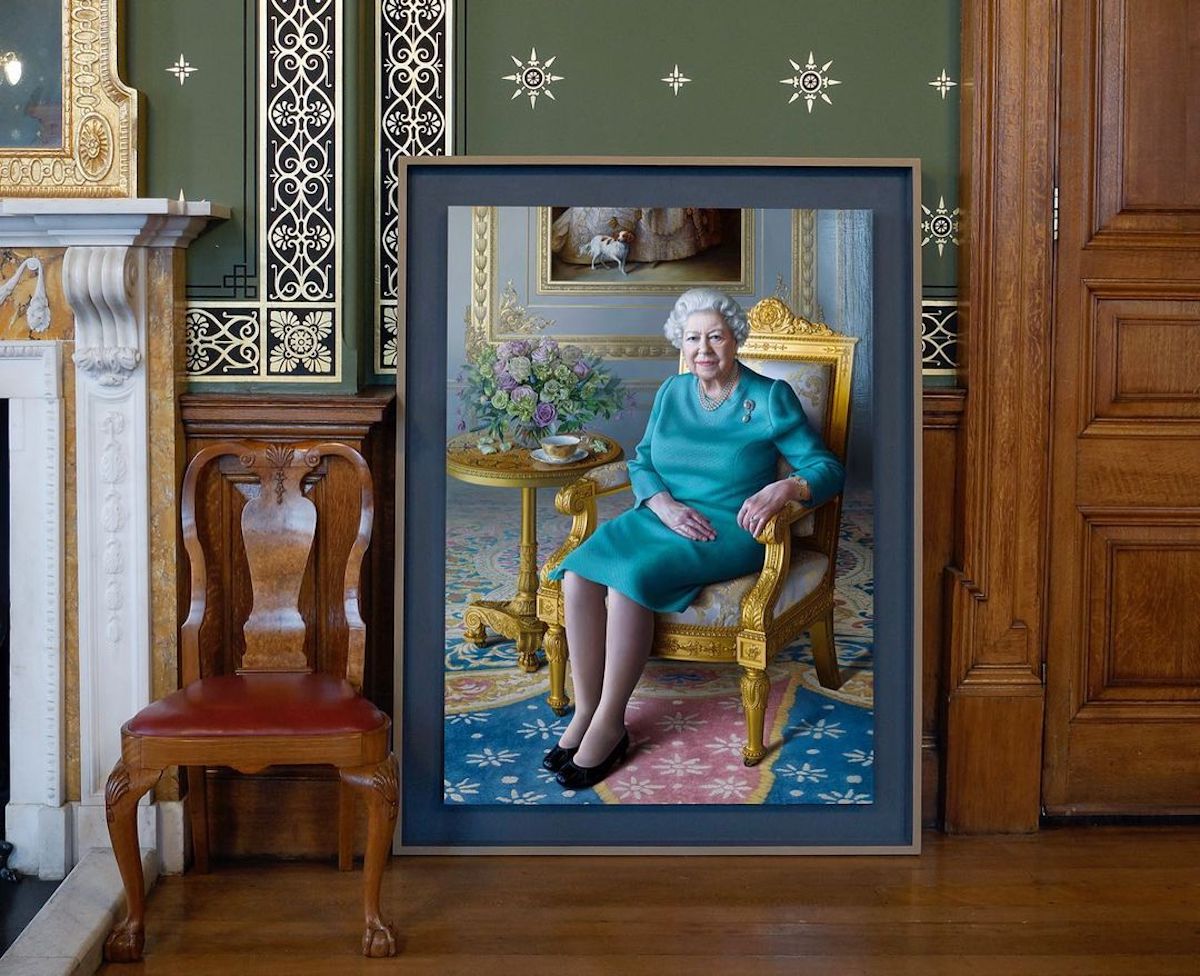

The detailed oil painting was created over a span of seven months, including two in-person sittings with the Queen.
